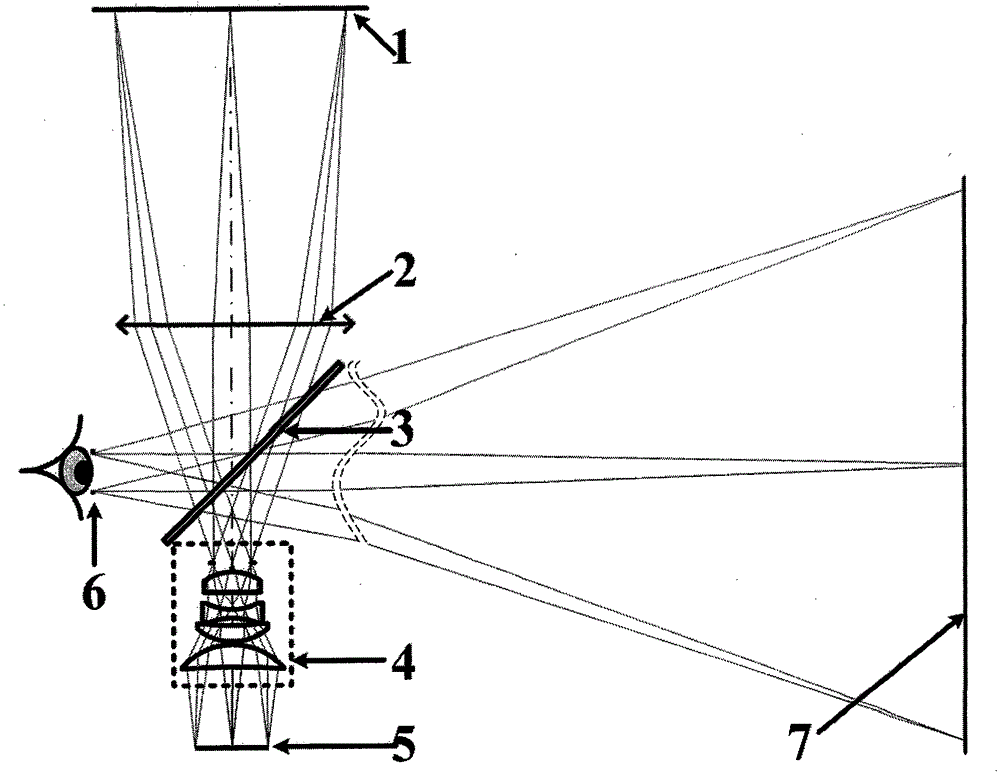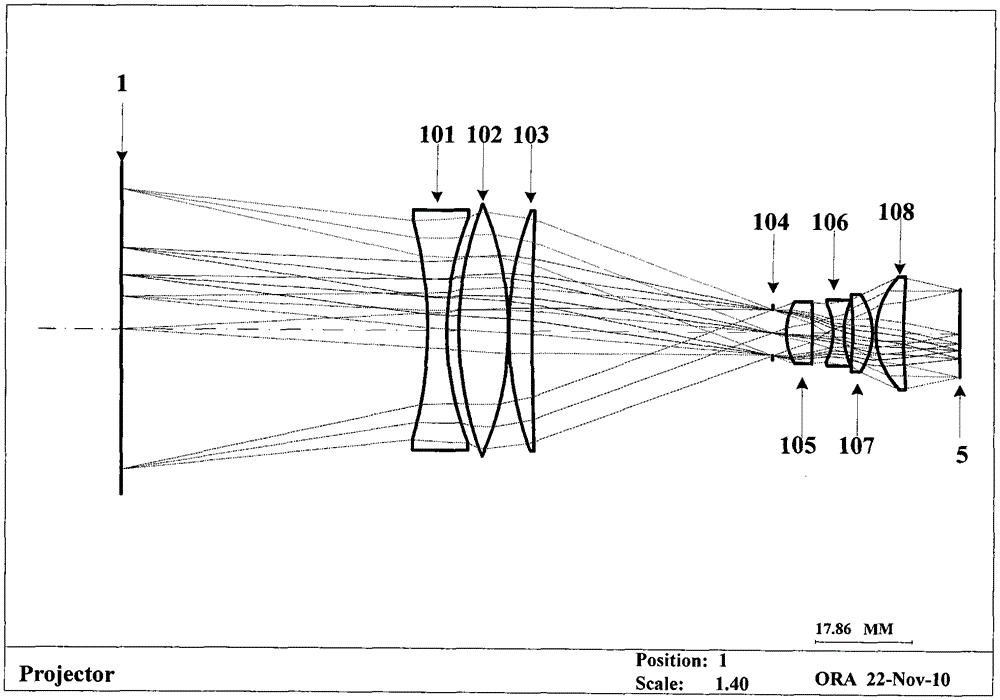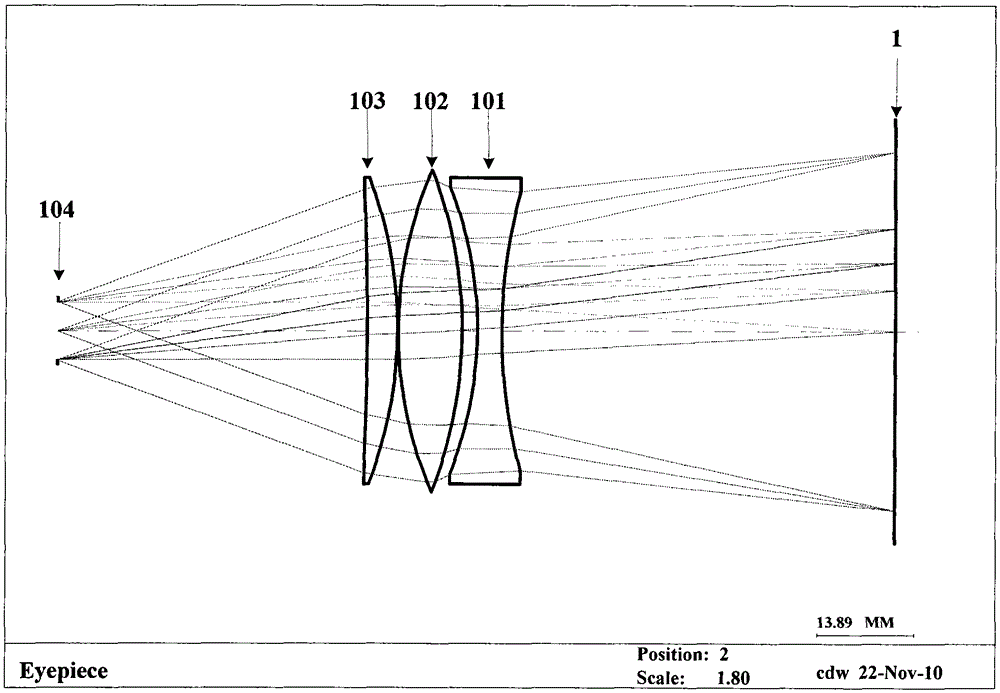An optical transmission projection stereoscopic helmet-mounted display
A helmet display and optical transmission technology, which is applied in optics, optical components, instruments, etc., can solve the problems of unclear imaging, difficult to realize optical transmission large field of view helmet display, large display physical structure collision, etc.
- Summary
- Abstract
- Description
- Claims
- Application Information
AI Technical Summary
Problems solved by technology
Method used
Image
Examples
no. 1 example
[0045] figure 2 It shows a schematic structural diagram of the close-range micro-projection optical system of the projection-type head-mounted display device according to the first embodiment of the present invention; image 3 A schematic diagram of the eyepiece optical system of the projection head-mounted display device according to the first embodiment of the present invention is shown. Such as figure 2 As shown, the short-distance micro-projection system of the projection-type helmet display device according to the first embodiment of the present invention is composed of an eyepiece group and a rear projection lens. For the convenience of describing the projection optical system is carried out from the display screen to the direction of the micro-display. From left to right is 1, the scattering projection screen; 101 is a biconcave lens with negative dioptric power, 102 is a lens with positive dioptric power, and 103 is a lens with positive dioptric power; 104 is the d...
no. 2 example
[0055] image 3 It shows a schematic structural diagram of the close-range micro-projection optical system of the projection-type head-mounted display device according to the first embodiment of the present invention; Figure 4 A schematic diagram of the eyepiece optical system of the projection head-mounted display device according to the first embodiment of the present invention is shown. Such as image 3 As shown, the short-distance micro-projection system of the projection-type helmet display device according to the first embodiment of the present invention is composed of an eyepiece group and a rear projection lens. For the convenience of describing the projection optical system is carried out from the display screen to the direction of the micro-display. From left to right is 1 scattering projection screen; 201 is a biconcave lens with negative dioptric power, 202 is a lens with positive dioptric power, and 203 is a lens with positive dioptric power; 204 is the diaphra...
no. 3 example
[0064] Figure 6 It shows a schematic structural diagram of the close-range micro-projection optical system of the projection-type head-mounted display device according to the first embodiment of the present invention; Figure 7 A schematic diagram of the eyepiece optical system of the projection head-mounted display device according to the first embodiment of the present invention is shown. Such as Figure 6 As shown, the short-distance micro-projection system of the projection-type helmet display device according to the first embodiment of the present invention is composed of an eyepiece group and a rear projection lens. For the convenience of describing the projection optical system is carried out from the display screen to the direction of the micro-display. From left to right is 1, the scattering projection screen; 301 is a biconvex lens with positive dioptric power; 302 is the stop surface of the close-range micro-projection optical system; 303 is a lens with positive ...
PUM
 Login to View More
Login to View More Abstract
Description
Claims
Application Information
 Login to View More
Login to View More - R&D
- Intellectual Property
- Life Sciences
- Materials
- Tech Scout
- Unparalleled Data Quality
- Higher Quality Content
- 60% Fewer Hallucinations
Browse by: Latest US Patents, China's latest patents, Technical Efficacy Thesaurus, Application Domain, Technology Topic, Popular Technical Reports.
© 2025 PatSnap. All rights reserved.Legal|Privacy policy|Modern Slavery Act Transparency Statement|Sitemap|About US| Contact US: help@patsnap.com



